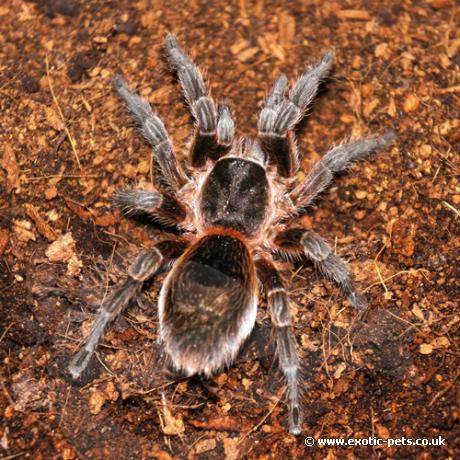

A beautiful, small and docile species of spider, that are also known as Chilean Copper and Chilean Violet tarantulas.
| Lifestyle | Terrestrial |
|---|---|
| Adult Size | Up to 10cm |
| Growth Rate | Slow |
| Environment | Arid forests |
| Suitability | Novice |
| Temperament | Docile |
This is a small sized species of tarantula with legspans reaching no more than 10cm. The femurs, abdomen and inner carapace are dark red in colour, with the rest of the spider having an almost fluffy appearance with pink highlights.
These spiders live in cool and dry areas of Chile and often found in or close by to forest regions. In the wild they would make use of their natural habitat by living in tree trunks, fallen logs, under rocks or in disused rodent burrows. This offers them protection from predators and the weather.
Additional heating is not required for this species if kept in a normal household. Temperatures in Chile average between 20-24°C (daytime) and 16-20°C (night-time), during winter the temperatures drop significantly lower.
Adults need to be maintained in terrariums that provide more floor space than height, plastic faunariums are perfect for this. For substrate use something soil based, such as coco fibre or a peat based substance and provide décor such as cork bark to provide a natural retreat.
Provide a water bowl in the corner of the enclosure and mist the terrarium with a hand sprayer no more than once a month. You can allow the substrate to dry out with this species, if water is always available.
Once this spider has reached adult, they don't have huge appetites and can be maintained on a couple of suitably sized crickets or locusts every two to three weeks.
Spiderlings can be kept simply in suitable and escape proof containers, provide a good layer of soil based substrate but lightly mist the sides of the container once a week to provide the tarantula with water. Do not allow the substrate to become permanently damp or humidity levels will rise to an undesirable level for this species.
Feed spiderlings weekly with couple of suitably sized prey items.